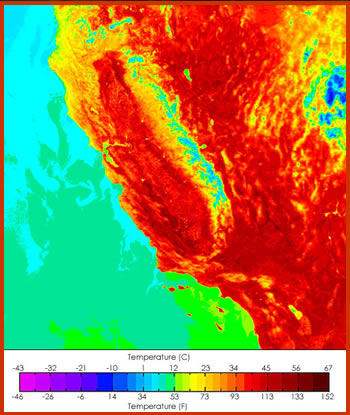This image, taken by the MODIS sensor on the Aqua satellite, shows the temperatures of California and Nevada during a spring heat wave in May 2004. MODIS (Moderate Resolution Imaging Spectroradiometer) measures the land temperature, which can get much warmer than the air. Notice that the tops of the Sierra Nevada mountains, which were still capped with snow, remain cool, forming a blue line at the California-Nevada border.
Click on image for full size
Courtesy of NASA
Heat Waves
During a heat wave it’s hot outside – much hotter than normal – and the heat lasts for days.
Some heat waves last for a week or more. Other heat waves last only a few days. The temperatures during a heat wave are much hotter in places that are usually warm. A heat wave has lower temperatures in places that are usually cool.
Beware! Heat waves are dangerous. The hot weather can be hazardous to your health. It can cause heat stroke, heat exhaustion, and heat cramps. Stay inside or in the shade during a heat wave and drink lots of water to avoid getting sick. Heat waves are also dangerous to plants. They cause crops to fail and can help start wildfires in dry areas.
How do they form? Sometimes, the jet stream, a flow of air through the mid-latitudes, can bring unusually warm air into an area. If the warm air stays put for a while, it can cause a heat wave. The heat is able to persist when there aren't rain and clouds to cool things off. The heat-trapping ability of cities, known as the urban heat island effect, can make a heat wave even warmer.
There are more heat waves today that there were in the past. The number of heat waves has risen, especially in Europe and Asia, and heat waves are expected to become more common during the this century.
Last modified July 15, 2009 by Lisa Gardiner.
You might also be interested in:
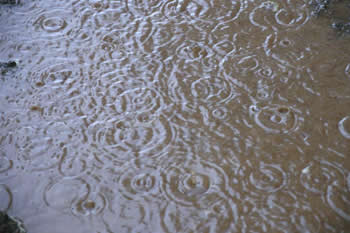
Raindrops form when tiny water droplets collide together in clouds to form bigger ones. When they get too heavy, rain falls out of the clouds. Rain is more than 5mm in diameter. The types of clouds that
...more
It often feels a bit warmer in a city than it does in a nearby rural area. This is called the urban heat island effect. What makes cities warmer? Urban heat islands form because the buildings, roads,
...more
Have you ever taken your temperature to see if you are getting sick? Scientists have been taking the Earth's temperature and have found that it is getting warmer. During the past 100 years, the Earth's
...more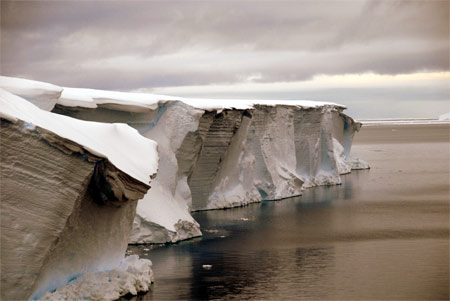
Looking for online content that can be used for a climate change education course or module? Pages linked below can be used to support an introductory climate change education for either a unit or a full
...more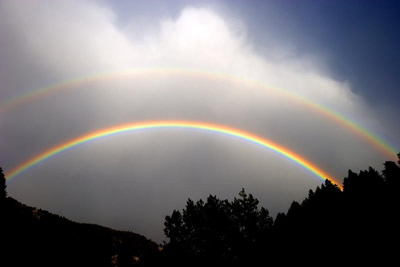
Rainbows appear in the sky when there is bright sunlight and rain. Sunlight is known as visible or white light and is actually a mixture of colors. The sun's rays pass through millions of raindrops. A
...more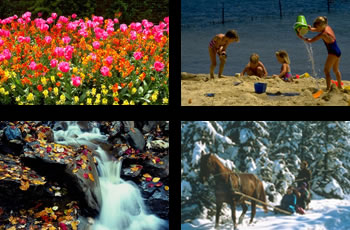
It takes the Earth one year to travel around the sun one time. During this year, there are four seasons: summer, autumn, winter, and spring. Each season depends on the amount of sunlight reaching the
...more
Scientists sometimes travel in airplanes that carry weather instruments in order to gather data about the atmosphere. These research aircraft bring air from the outside into the plane so scientists can
...more


